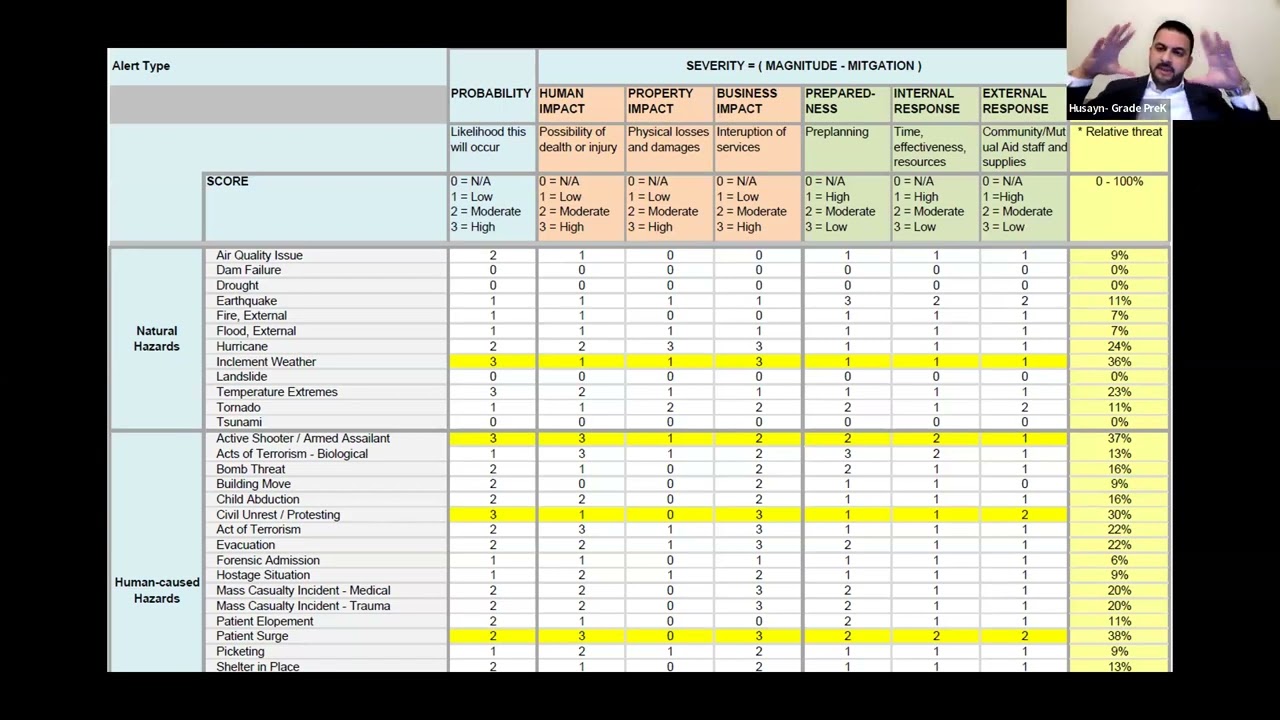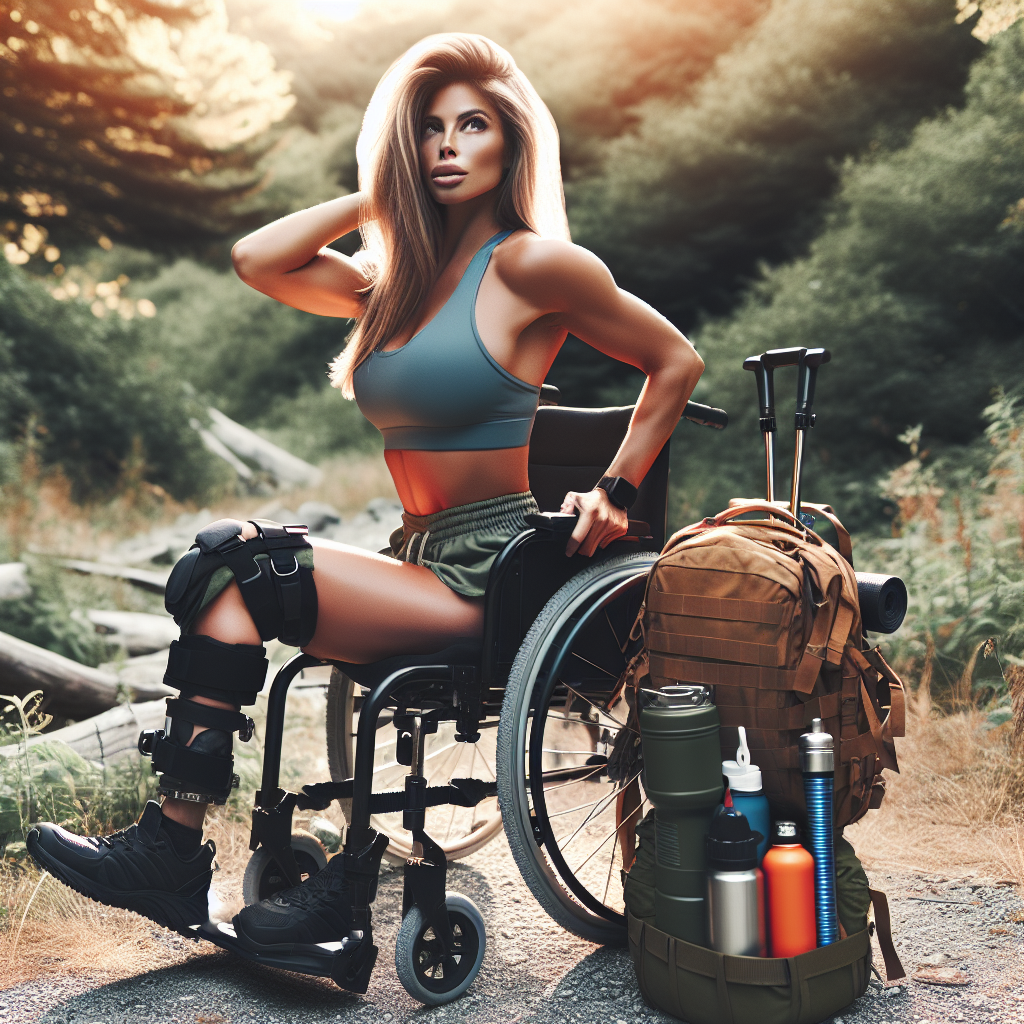Womens Preparedness
Craft Your Way to Safety: DIY Survival Tools for Women
Craft Your Way to Safety: DIY Survival Tools for Women
Hello, sisters! I’m Jade Tripp, and today we’re diving into an exciting and empowering topic: crafting your own survival tools. As women, it’s crucial to feel confident and prepared for any situation that might come our way. With a little creativity and some hands-on effort, you can create your own relatively simple DIY survival tools for self-defense and personal protection. Let’s get started!
Why DIY Survival Tools?
Before we jump into crafting, let’s discuss why creating your own survival tools can be beneficial. DIY tools are:
- Cost-effective: Many survival tools can be expensive, but you often have the materials on hand already or can get them cheaply.
- Personalized: You can craft tools that fit your specific needs and preferences.
- Skill-building: Using your own hands not only provides a sense of accomplishment but also helps you build relevant skills that can come in handy in emergencies.
Essential DIY Survival Tools
1. Personal Alarm
A personal alarm can be a vital tool to draw attention when you feel threatened. Here’s a simple way to make one:
What You Need:
- A whistle
- A small flashlight
- A keychain
How to Assemble:
- Clip the whistle and flashlight to your keychain.
- Ensure they are easy to access; attach them to your purse or belt loop.
Why It’s Effective: Sound is a formidable deterrent, and having a flashlight can help illuminate a dark area or signal for help. Remember, keeping this tool easily accessible is vital!
2. Pepper Spray Keychain
While you can purchase pepper spray, making your own version can be a satisfying project!
What You Need:
- An old perfume spray bottle (preferably dark)
- Water
- A small amount of cayenne pepper
How to Create:
- Fill the spray bottle about ¾ of the way with water.
- Add a teaspoon of cayenne pepper and shake well.
- Label clearly to avoid confusion.
Considering Your Surroundings: This spray can provide you with a layer of safety virtually anywhere – from college campuses to bustling city streets. But always remember: using it is a serious matter, so understand both the legal implications and appropriate situations to use it.
3. Survival Bracelet
This isn’t just a fashion statement! A paracord bracelet can be an excellent survival tool in emergencies.
What You Need:
- Paracord (at least 550 lb test)
- A buckle or clip
How to Make:
- Measure and cut the paracord to fit your wrist. Remember to leave extra for weaving!
- Weave the paracord into a braid, looping through the buckle as you work.
- Secure the ends.
Uses: In case of an emergency, you can unravel the bracelet to create rope for various purposes, whether it’s securing items, creating a shelter, or assisting in rescue situations.
4. First Aid Kit
Creating your own first-aid kit ensures that you have all necessary items customized to your lifestyle—whether you’re a city dweller, a hiker, or a busy mom!
What You Need:
- A small, durable container (like a tackle box)
- Band-aids, antiseptic wipes, tweezers, scissors, gauze, and any needed medications.
Steps to Personalize:
- Gather supplies that you truly find essential.
- Label compartments clearly for easy access.
- Consider adding a small CPR guide or emergency contact information.
Why It’s Important: When you’re prepared for minor injuries and emergencies, you can act quickly and confidently, reducing panic in stressful situations.
5. Homemade Walking Stick
A sturdy walking stick can double as a self-defense tool, offering both support and an added layer of protection when you’re out and about.
What You Need:
- A sturdy branch or pole, at least 48 inches long
- Sandpaper
- Paint or wood stain (optional)
Building Your Stick:
- Sand it down to ensure there are no rough edges.
- Optionally, stain or paint to make it personal.
- Practice using it as a balance tool and protection tool.
Use Your Surroundings: Whether it’s on a hiking trail or city streets, having a durable stick can give you confidence. Just remember to be aware of your environment and use your skills wisely.
Overcoming Challenges: Real Stories
Every woman has a story, and I want to share a few anecdotal triumphs that highlight the importance of preparedness.
1. Maya’s Journey:
Maya, a solo traveler, used her pepper spray keychain and personal alarm when she felt threatened on a trip. The quick activation of her alarm helped draw attention, allowing her to escape a precarious situation unscathed.
2. Lisa’s Adventure:
During a camping trip, Lisa’s handmade paracord bracelet helped secure her tent in a storm. She shared how the experience taught her the importance of being prepared and reminded her that crafting skills can translate into real-life applications.
Conclusion: Empowering Ourselves
Crafting your own survival tools is not only empowering; it’s an act of self-love and protection. By making these tools, you take control of your safety and well-being. Remember, it’s about the mindset as much as the tools themselves.
So, gather your supplies, unleash your creativity, and take comfort in knowing that you are prepared and equipped! Share your crafting and survival stories with fellow sisters, encouraging others on their journey to safety.
Stay strong, stay empowered, and let’s create a secure future together!
Womens Preparedness
Flood Disaster Preparedness, Mitigation, Response, and Recovery

103 PMA Academic Webinar on Flood Disaster Preparedness, Mitigation, Response, and Recovery by Mehdi Rizvi.
source
Womens Preparedness
Turning disability into capabilities: Tips for emergency preparedness for the disabled

Hello, everyone! I’m Jade Tripp, and I’m excited to connect with you today on a topic that’s incredibly important: emergency preparedness for women with disabilities. Whether it’s a physical limitation, sensory impairment, or other challenges, we know that women with disabilities can face unique situations in emergencies. But don’t worry! With the right mindset and some practical tips, we can turn these challenges into strengths.
Understanding Your Needs
First and foremost, it’s essential to understand your unique needs. Each person’s situation is different, so take some time to evaluate what specific preparations you’ll require. This can include mobility needs, sensory impairments, or medical conditions that affect your safety during an emergency.
Example: Consider Jessica, a woman who uses a wheelchair. She lives in an area prone to earthquakes. Recognizing her mobility needs, Jessica has ensured that her emergency exit routes are wheelchair accessible and that she practices them regularly. She uses markings on the wall to indicate safe zones and routes.
Create a Personal Emergency Plan
Once you understand your needs, create a tailored personal emergency plan. This can be a simple document that outlines what to do in various situations, such as fires, floods, or other disasters. Share this plan with family, friends, or caregivers who may need to assist you.
Example: Lisa is visually impaired and uses a guide dog. She has a reliable buddy system with her friends, who know her routes and can guide her during an emergency. They’ve practiced how she can communicate her needs during a crisis.
Build an Accessible Emergency Kit
Your emergency kit is crucial. For women with disabilities, this should be customized based on your specific needs. Include items like:
-
Medical Supplies: Ensure that you have an adequate stock of medications, adaptive devices, and any necessary medical documents.
-
Communication Tools: For those with hearing impairments, consider visual alarms or vibrating alerts. Smartphones can also be set to vibrate for notifications.
- Comfort Items: Include items that provide emotional comfort, like a favorite book or photo that can help ground you during stressful times.
Example: Maria, who is hard of hearing, includes a vibrating alarm clock in her emergency kit. She also carries a small whiteboard and marker to communicate easily in noisy situations.
Train and Practice
Knowledge is power! Regular training and practice can significantly enhance your confidence and preparedness. Whether it’s learning self-defense techniques, communication strategies, or practicing evacuations, role-playing these scenarios can be incredibly beneficial.
Example: Amanda, who has a cognitive disability, attends classes that focus on emergency response training tailored to her abilities. Through these sessions, she learns to recognize emergency signals and practice calm responses.
Stay Informed About Community Resources
You are not alone in this journey! Many organizations and community resources are dedicated to helping people with disabilities prepare for emergencies. Look for local groups or online resources that offer support or additional tips.
Example: The American Red Cross provides specialized training and resources for individuals with disabilities. They hold workshops that focus on making emergency plans accessible and understanding community resources.
Foster a Network of Support
Building a reliable support network can make a world of difference. Surround yourself with friends, family, and community members who understand your needs and can assist during emergencies. Don’t hesitate to discuss your emergency plan with them.
Example: Use technology to help keep friends and family in the loop. Social media or community groups can create a sense of solidarity, ensuring you have the emotional support necessary for peace of mind.
Practice Mindfulness and Self-Care
In preparing for emergencies, don’t forget to take care of your mental health! Practice mindfulness techniques that can help you stay calm in an emergency. Breathing exercises or visualization techniques can be helpful.
Example: During her fire drills, Sarah takes a few moments to do deep-breathing exercises. This not only calms her nerves but also helps her focus on the next steps to take.
Empower Yourself
Finally, recognize that your disability does not define your capabilities. You can be resourceful, prepared, and resilient. Embrace your unique strengths, and remember that it is entirely okay to ask for help when needed.
Example: After realizing she needed assistance in practicing her emergency drills, Jasmine reached out to a local community center. They not only guided her on how to prepare but also celebrated her empowerment journey—showing that asking for help is a strength, not a weakness.
Conclusion
To all the women reading this: remember that preparation is not just about having a plan; it’s about building confidence, creating resilient support systems, and knowing that you can navigate emergencies with courage and strength. You have what it takes to turn your disability into your greatest capability. With the right tools and mindset, you’ll be prepared not only to survive emergencies but to thrive in any situation life throws your way.
Stay strong, stay prepared, and remember—you’re never alone on this journey!
Womens Preparedness
preparedness 7
-

 Womens Self Defense11 months ago
Womens Self Defense11 months agoNew Legislation Empowers Women to Defend Themselves
-

 Self Defense News1 year ago
Self Defense News1 year agoShe was convicted of killing her abusive boyfriend. Now a Maple Grove woman is home awaiting a new trial.
-

 Self Defense News1 year ago
Self Defense News1 year agoSelf-Defense for All: The new Gracie Jiu-Jitsu Pasadena is for everyone | Online Features
-

 Womens Self Defense1 year ago
Womens Self Defense1 year agoTop 5 Self-Defense Techniques Every Woman Should Know
-

 Womens Self Defense7 months ago
Womens Self Defense7 months agoUnderstanding State-by-State Variation in Self Defense Laws
-

 Womens Fitness1 year ago
Womens Fitness1 year agoXtreme Bodyweight HIIT (Lots of Jumping!) | Joanna Soh (Fio Series)
-

 Womens Preparedness1 year ago
Womens Preparedness1 year ago10 essential skills for surviving in the great outdoors
-

 Womens Preparedness1 year ago
Womens Preparedness1 year agoEmpower Yourself: A Guide to Female Survival Planning




